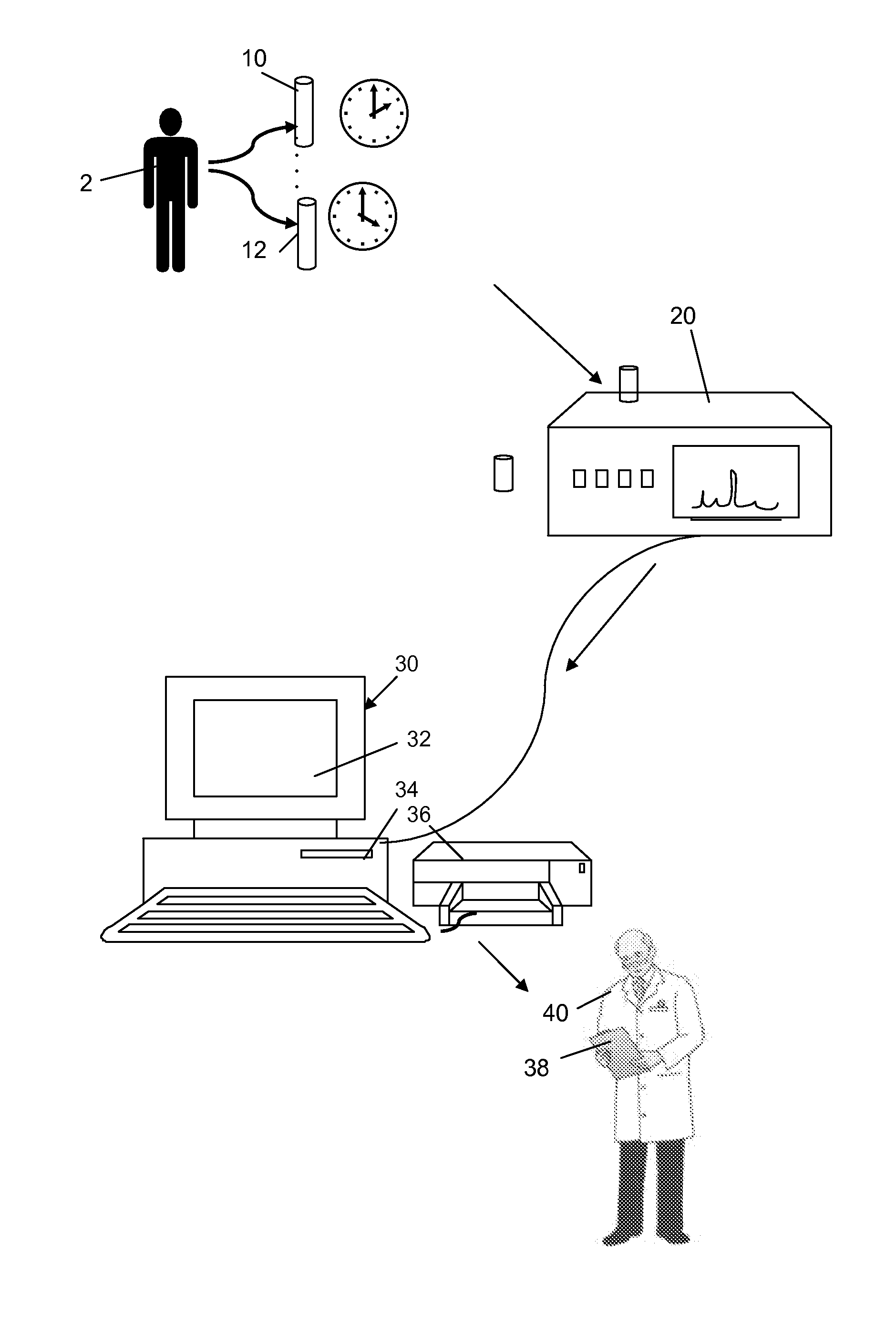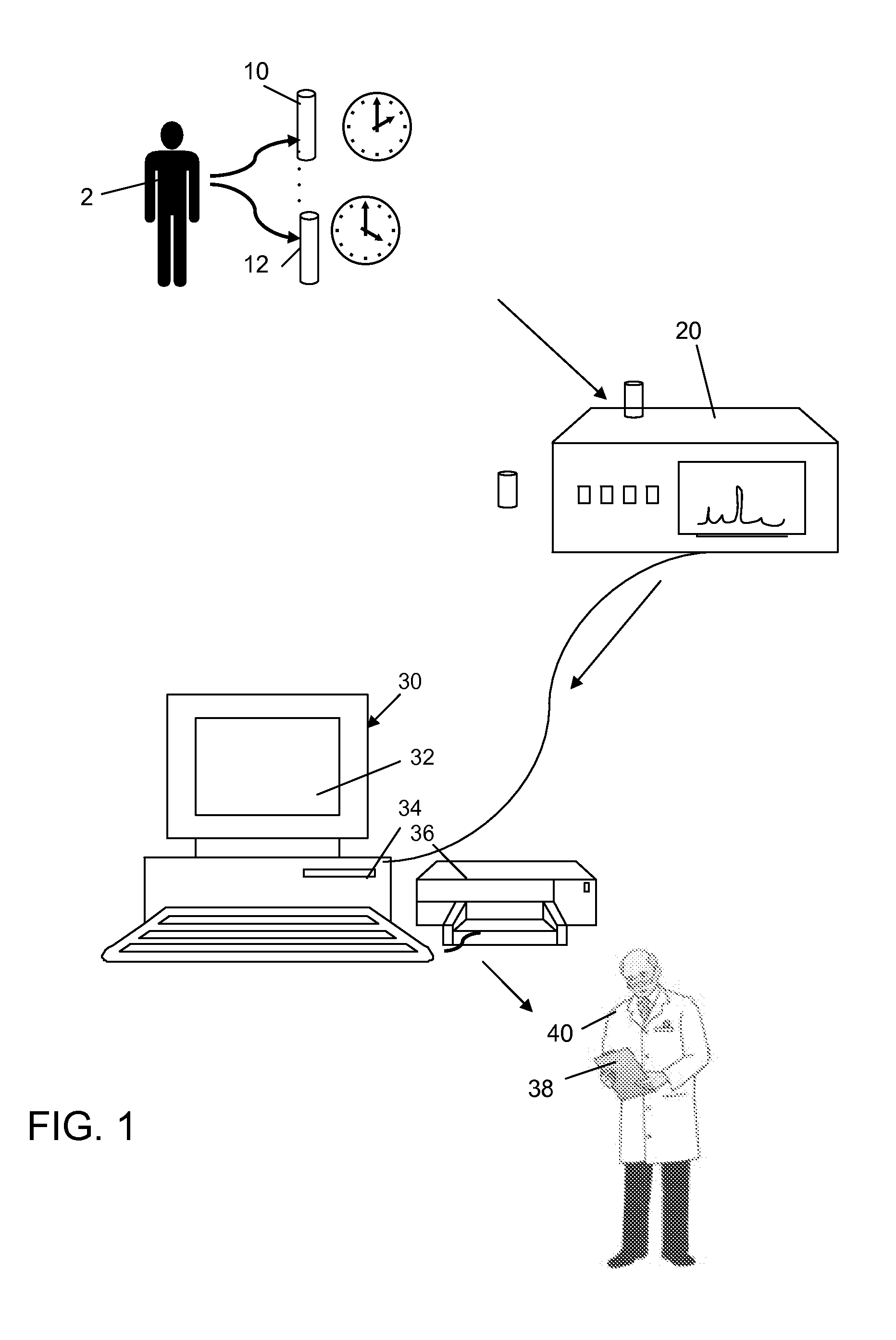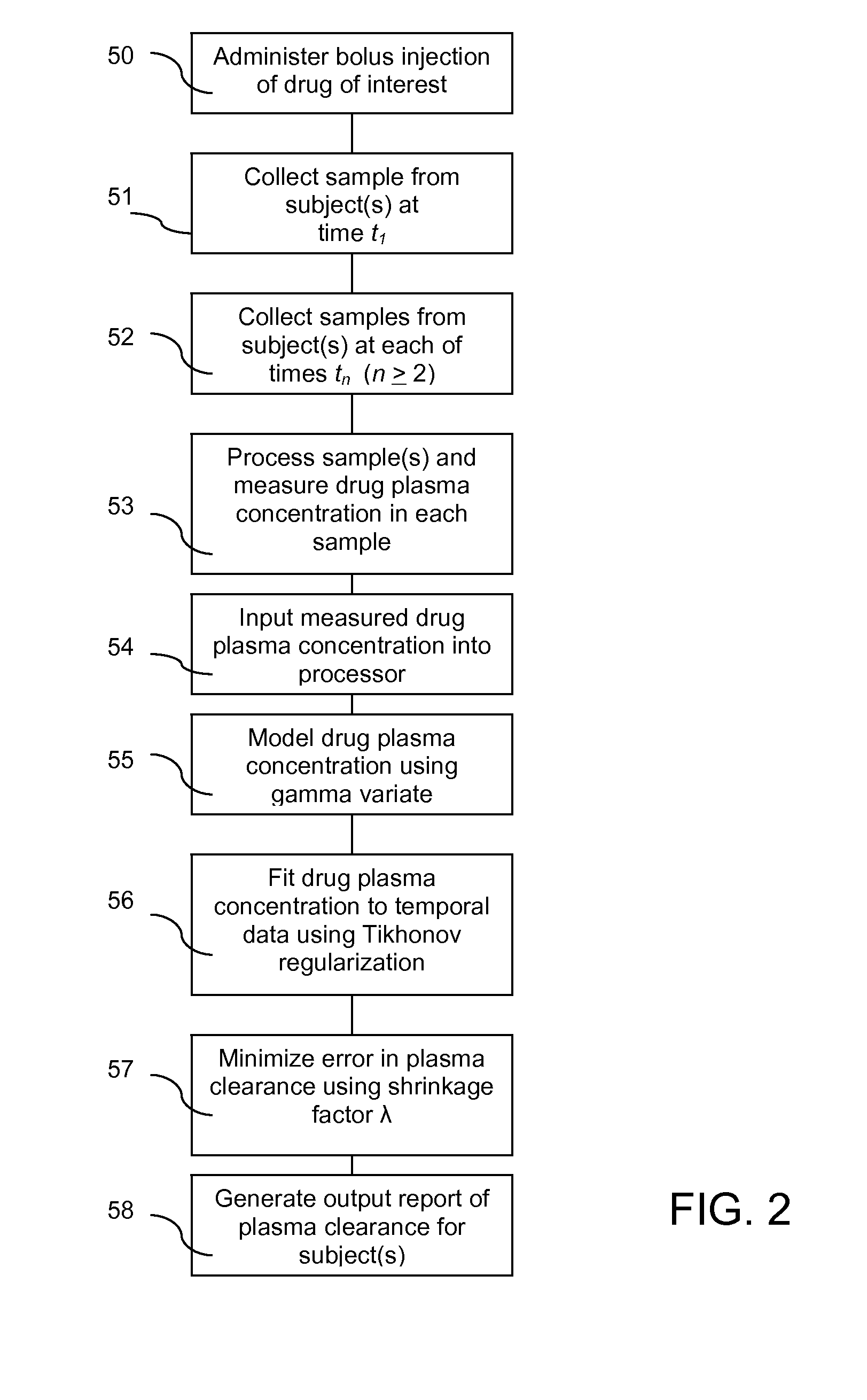Method for Evaluating Renal Function
a renal function and renal function technology, applied in the field of renal function evaluation, can solve the problems of inability to evaluate renal function, inability to use inulin constant infusion in patients with severely reduced renal function, and inability to numerically integrate auc, etc., to achieve the effect of convenient us
- Summary
- Abstract
- Description
- Claims
- Application Information
AI Technical Summary
Benefits of technology
Problems solved by technology
Method used
Image
Examples
example 1
Characterization of Parameters from Tk-GV Fits
[0043]Tk fit parameter calculations include tolerances as part of the Tk regression process. However, since Tk-GV attempts to minimize sCL / CL, i.e., a tolerance, it is prudent to crosscheck the intrinsic Tk-GV tolerance results. Note that bootstrap regression, which randomizes residuals in time, is not compatible with time-based adaptive fitting. Instead, the Tk-GV parameter tolerances were crosschecked with LOO (Leave One Out, jackknife) analysis of variance for CL and V (373 trials total or 8 trails for each of 41, 8-sample patients and 9 trials for each of 5, 9-sample patients). The resulting jackknife variances are corrected for leaving data out under highly correlated resampling conditions. It is also possible to use L20 (leave two out), L30 (leave three out), and so forth. In general, leaving d items out (LdO) produces a dth variance estimator. To calculate the standard deviation (SD) of a parameter of interest, one merely needs to...
example 2
Effects of Sample-Subset Selection on Tk-GV Model Parameters
[0046]In this example, the Tk-GV models are fit to subsets of each patient's data. There are many ways to select subsets of samples for studies containing 8 or 9 samples. Restricting the sample subsets of the 8-sample dataset that have temporally consecutive samples that drop as many as 4 early or late samples has an advantage. While this selection is not exhaustive, it allows for plotting of the effect of the widest available spread of mean sample times on the values of the fit parameters α and β. These parameters, α and β are the only independent parameters, as per Equation 6, of the Tk-GV model. The behavior of this model with respect to the extremes of mean sample times can be plotted as the frequency of out of bounds values of α and β for increasing mean sample time. The obvious targets for analysis are the desired measures for performing the testing: CL and V. But, also of interest is the number of cases for which Tk-...
example 3
Characterization of Tk-GV Residuals
[0051]The test performed in this example considers the structure or temporal trend of the residuals (the differences between the data and the Tk-GV fits) for various Tk smoothings, λ, and renal rate constants, β. In general, one would only expect the mean residuals from ordinary least squares (OLS) regression to be zero for a perfect match between a model and the data. However, to find a more precise estimate of CL, Tk-GV fitting introduces bias to the otherwise unbiased OLS solution. In other words, for the Tk-GV method, biased residuals from fitting early times are desired given that the terminal GV behaviour sought is inappropriate to earlier times. Thus, inspection of these residuals is revealing, and the residuals are examined in some detail in this example.
[0052]Results: FIG. 4 shows the mean residuals from Tk-GV regressions of the 41 eight sample cases. These residuals are plotted for LOO fits in 8 equal octiles of increasing shrinkage value...
PUM
 Login to View More
Login to View More Abstract
Description
Claims
Application Information
 Login to View More
Login to View More - R&D
- Intellectual Property
- Life Sciences
- Materials
- Tech Scout
- Unparalleled Data Quality
- Higher Quality Content
- 60% Fewer Hallucinations
Browse by: Latest US Patents, China's latest patents, Technical Efficacy Thesaurus, Application Domain, Technology Topic, Popular Technical Reports.
© 2025 PatSnap. All rights reserved.Legal|Privacy policy|Modern Slavery Act Transparency Statement|Sitemap|About US| Contact US: help@patsnap.com



